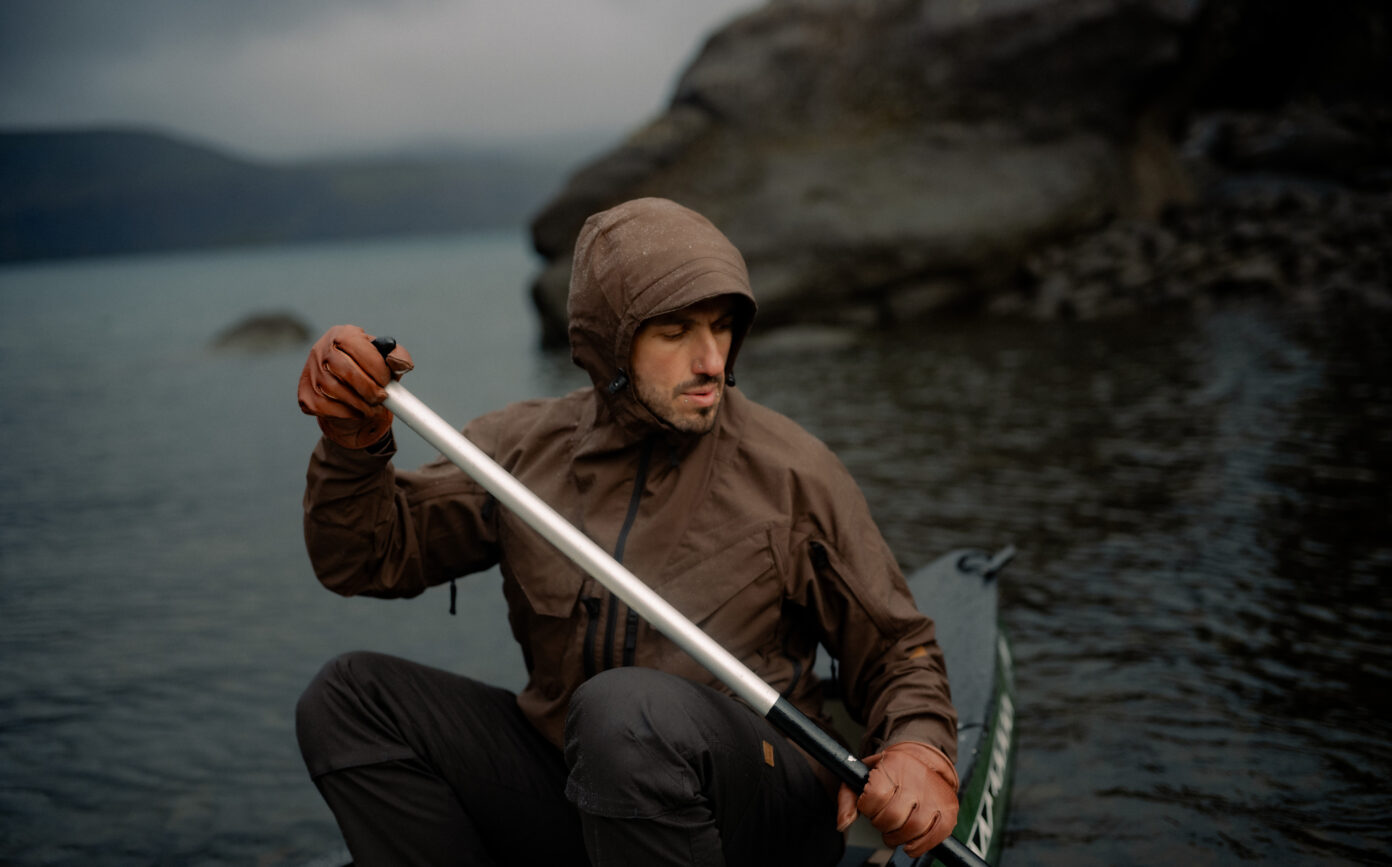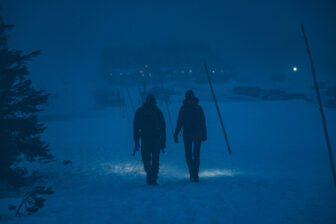
Anorak – where did it come from, and why is it so popular?
From the frozen Arctic expanses to the bustling streets of big cities, the anorak has quite the journey. It’s more than just a jacket – a story of survival, innovation, and a fashion revolution. Initially worn by the Inuit to protect against harsh conditions, the anorak became a staple in modern wardrobes and even found its place in military gear. But how did a jacket with such rugged roots make its way onto fashion runways?
Table of Contents
From the Arctic to our closets: the long journey of the anorak
The term “anorak” comes from the Greenlandic word annoraaq, referring to a hooded outer garment traditionally worn by the Inuit, the indigenous people of the Arctic and sub-Arctic regions of Greenland, Canada, Alaska, and Siberia. The original anoraks were made from animal hides – mainly caribou, reindeer fur, and sealskin. Thanks to a layered construction providing insulation and water resistance using seal intestines or fish oil, these garments protected hunters and kayakers from the cold and moisture of the Arctic climate.
These clothes weren’t just functional; they held cultural significance. Inuit people decorated them with unique elements representing different communities or even family members. For example, married women often wore white versions adorned with beads or tassels. The anorak started gaining recognition outside of native cultures by the late 19th century during major Arctic expeditions. Famous explorers like Robert Peary, Roald Amundsen, and Fridtjof Nansen returned from their polar expeditions with samples of Arctic clothing. Western designers quickly picked up on the practical, wind- and rain-resistant garment.

Anoraks in military use
The military also became interested in protective clothing designed by Arctic peoples. The first anoraks appeared among German mountain troops in the early 1930s. They were simple, white hooded jackets with three chest pockets, providing soldiers with winter camouflage and protection from foul weather. In the 1940s, similar jackets emerged in several countries. The Germans improved their design by creating a reversible anorak: white on one side and green on the other.
Meanwhile, the British developed the SAS smock anorak, made from tightly woven cotton with four pockets. Initially available in one color, camo versions were later introduced. The Americans weren’t far behind, either. They created knee-length cotton jackets for their troops to protect against cold, wind, and moisture. In the early 1940s, the Ski model was developed, a pullover with a fur hood and pockets above the hips.
Let’s not forget Poland, where the scout anorak has roots in the Warsaw Uprising and German anoraks used by scouts. Older readers highly coveted the scout jackets made in Poland in the 1980s. These simple, one-pocket jackets, often green or sand-colored, protected against wind and rain and were perfect for outdoor activities. In Poland, we most often associate anoraks with these types of jackets.

Our take – modern and functional adaptations of the anorak
At Helikon-Tex, we love practical clothing with a rich history, so you’ll find professional anoraks in our collection, adapted for various activities. We paid close attention to material selection, ventilation, pocket placement, and many functional and tactical details. Here’s what we’ve come up with – see which anorak suits you best.

Tracer Anorak
This version is designed for tactical and military use. The Tracer anorak is based on the Woodsman but comes in both civilian colors and several camouflage patterns. The material on the back is the same as the rest of the jacket. We’ve added more pockets, too – eight in total: two on the shoulders, a large front pocket with three internal compartments and one external pocket, and a pass-through pocket under the main compartment close to the body, perfect for warming your hands or storing gloves. The Tracer has an oversized fit, making it ideal for layering over a fleece, so you can have camouflage on the outside no matter what color your base layer is. You can also adjust the fit using several adjustment points. Ventilation is provided by full-length side zippers, just like in the Woodsman jacket.




Woodsman Anorak
Perfect for outdoor adventures, camping, and bushcraft. The Woodsman anorak jacket is made from two high-quality materials, carefully chosen for their combined benefits. The first, DuraCanvas®, is resistant to sparks and mechanical damage. It’s great for windy weather and can be waxed, protecting you from moisture. The back of the jacket is made from StormStretch® softshell fabric. It enhances breathability and freedom of movement and is ideal for wearing with a backpack. Woodsman anorak features a large kangaroo pocket with an internal organizer and double-sided side zippers that run from the armpit down to the hem. It makes it quick to put on and take off while providing excellent ventilation. The adjustable hood and cuffs offer additional protection from the wind.




Mistral Anorak
Finally, something lighter but still protective – the Mistral anorak is the perfect jacket for hiking, and city wear in unpleasant weather. This softshell anorak is made from StormStretch® fabric, which protects from light rain while maintaining breathability. With no sizeable front zipper, the jacket offers excellent wind resistance. The large front pocket provides easy access to your EDC essentials, neatly organized with an internal organizer. Additionally, the Mistral features two hip pockets and two shoulder pockets. Anything else? Of course – reinforced elbows for increased durability and an adjustable hood.




Pilgrim Anorak
Next is a jacket perfect for challenging hikes in variable weather conditions. The Pilgrim anorak is made entirely from durable, spark- and tear-resistant DuraCanvas® fabric, which can be waxed for protection. Its numerous pockets make it easy to organize your gear, and its unique placement ensures quick access even when sitting or kneeling. For better protection against the elements, we’ve extended the jacket’s overall length and the kangaroo pocket. It allows for a more extended front zipper for improved ventilation during challenging climbs. The Pilgrim anorak’s pockets are worth a closer look. They feature internal straps for securing gear, are closed with Canadian buttons or YKK® zippers. The kangaroo pocket is lined with insulation to warm up cold hands.




More than just a jacket
The anorak is a piece of history. From the indigenous peoples of the Arctic, through polar expeditions, to the military, bushcraft, and modern streets, the anorak has adapted to various conditions like a chameleon – maybe that’s why we love it so much. One thing is for sure – this jacket proves that timeless fashion lies in practicality and adaptability to changing needs. If you want to stay updated in the world of long-lasting clothing, sign up for our newsletter at this link.










